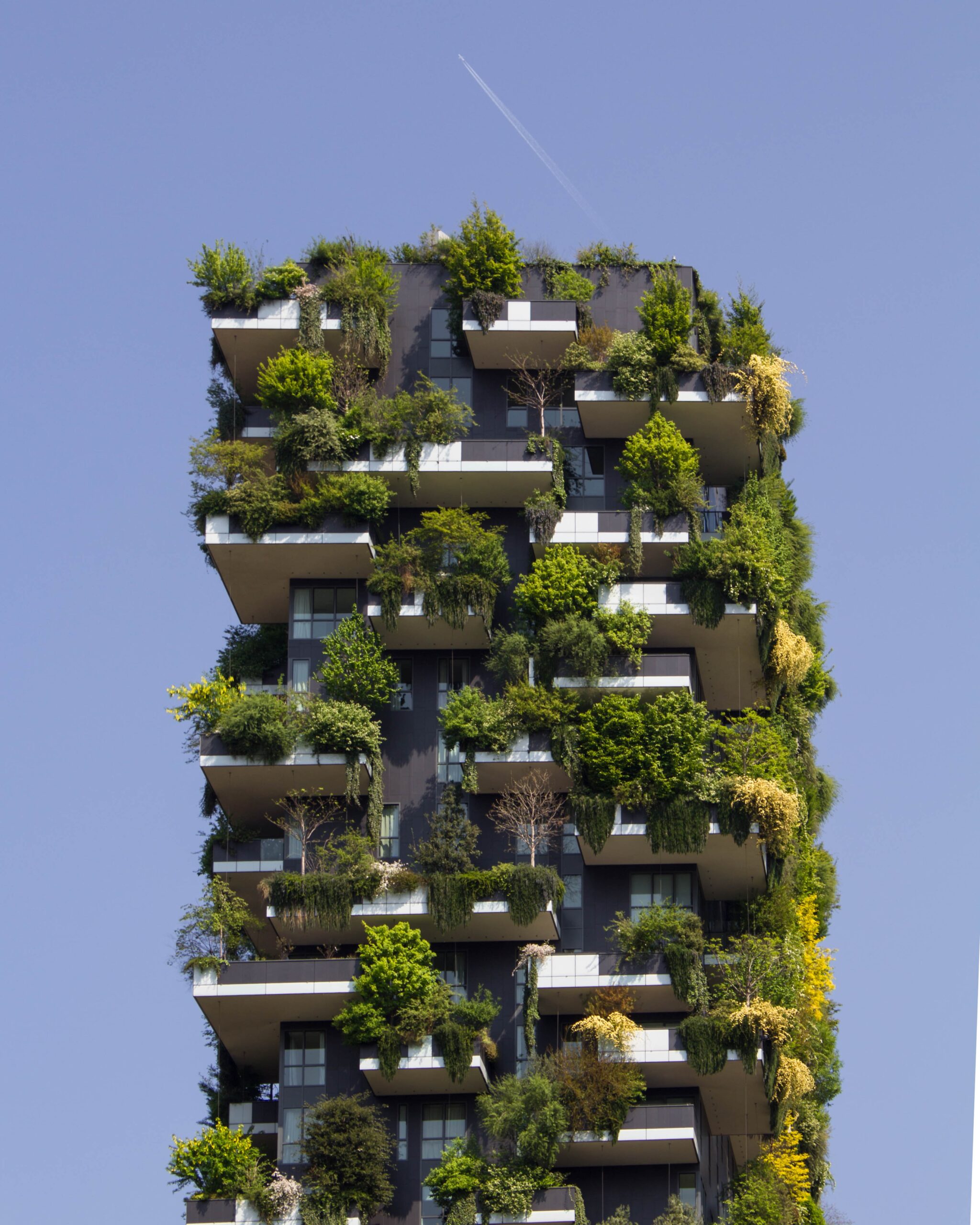Last week I had the pleasure of attending Greenbuild 08, a conference and expo dedicated to (quite obviously) green building. The sheer size of this event forced me to pause. The architecture, construction and design industries — and everyone who supplies to them — are certainly committed to reducing their environmental impacts. As well they should be.
In North America alone, buildings are responsible for more than 2,200 megatons of carbon dioxide emissions annually. This equates to approximately 35% of the continent’s total CO2 emissions (source: pdf). While this number may seem daunting, it also presents an incredible opportunity to bring innovation and efficiency into architecture and design.
The more than 1,500 exhibitors at Greenbuild were certainly jumping at this opportunity: from acoustical systems and adhesive/coating/sealants to siding and wall coverings, everyone related to building was represented. And most were displaying their “green” credentials proudly at their booths: carbon neutrality, LEED certification, low VOCs, locally sourced… you name it.
Architects struggle daily with the cost-benefit trade-offs of every facet of their work. Green building practices create another layer of decisions as architects balance the initial investment in efficiency with the longer-term energy savings that a client will experience. While many clients are demanding these innovations, others still need to be convinced of the benefits.
Green building practices encompass a wide range of topics including greenhouse gas emissions, energy efficiency, water use management, air quality, environmentally-responsible materials, waste and more. As an industry, green building is currently estimated to account for approximately 2% of new non-residential construction in the U.S. and 0.3% for the residential market (source: pdf). While these numbers continue to grow, there is clearly enormous opportunity for pioneering projects. The added incentive of green building ratings programs, like the widely used United States Green Building Council’s Leadership in Energy and Environmental Design (LEED) system, allows architects to market their inventive work to interested clients.
For many, the ultimate goal is the construction of a green building that functions as a self-contained ecosystem, using only energy generated on or by the building, and reusing waste to the fullest extent possible. However, along the spectrum are countless opportunities to increase efficiency and reduce energy use by varying degrees.
Budgets and technology can often limit how far along that spectrum one can go. One way to bridge the gap between the feasible and the ideal is through the use of carbon offsets, balancing the carbon emissions that can’t otherwise be avoided. While this may seem like an easy solution, it’s important to be diligent in finding high quality offsets about which the architect and the clients can feel confident. Needless to say, Terrapass sells such offsets!
Being at Greenbuild allowed me the opportunity to support one of our Carbon Balanced Business partners, Architectural Area Lighting (AAL). For the past year, AAL has been balancing its carbon footprint from onsite energy use, including manufacturing, business travel, employee commuting and freight. AAL understands that there is more energy used (and thus carbon emissions generated) when their lighting fixtures are used. At Greenbuild, they announced a new opportunity for their architectural clients to be able to purchase Terrapass offsets along with their lighting fixtures in order to offset the emissions from their electricity use as well.
We are very excited and proud to work with innovative and dedicated companies, like AAL. And, based on the turnout at Greenbuild, there are many others who are throwing down the green gauntlet and even more who know they should be.
Brought to you by terrapass.com
Featured image






